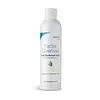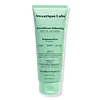What's inside
What's inside
 Key Ingredients
Key Ingredients

 Benefits
Benefits

 Ingredients Side-by-side
Ingredients Side-by-side

Water
Skin ConditioningSodium Lauryl Glucose Carboxylate
CleansingLauryl Glucoside
CleansingDecyl Glucoside
CleansingDisodium Cocoyl Glutamate
CleansingGlycerin
HumectantBentonite
AbsorbentLactobacillus Ferment
Skin ConditioningLactobacillus
Skin ConditioningCocos Nucifera Fruit Extract
EmollientXanthan Gum
EmulsifyingSodium Hyaluronate
HumectantGuar Hydroxypropyltrimonium Chloride
Skin ConditioningCitric Acid
BufferingPanthenol
Skin ConditioningTocopheryl Acetate
AntioxidantWater, Sodium Lauryl Glucose Carboxylate, Lauryl Glucoside, Decyl Glucoside, Disodium Cocoyl Glutamate, Glycerin, Bentonite, Lactobacillus Ferment, Lactobacillus, Cocos Nucifera Fruit Extract, Xanthan Gum, Sodium Hyaluronate, Guar Hydroxypropyltrimonium Chloride, Citric Acid, Panthenol, Tocopheryl Acetate
Water
Skin ConditioningCocamidopropyl Hydroxysultaine
CleansingDisodium Cocoyl Glutamate
CleansingSodium Cocoyl Glutamate
CleansingBentonite
AbsorbentStearyl Alcohol
EmollientPropanediol
SolventCichorium Intybus Root Extract
MaskingCamellia Sinensis Leaf Extract
AntimicrobialCamellia Sinensis Seed Extract
HumectantAlpha-Glucan Oligosaccharide
CleansingEthylhexylglycerin
Skin ConditioningXanthan Gum
EmulsifyingCitric Acid
BufferingSodium Hydroxide
BufferingPotassium Sorbate
PreservativePhenoxyethanol
PreservativeWater, Cocamidopropyl Hydroxysultaine, Disodium Cocoyl Glutamate, Sodium Cocoyl Glutamate, Bentonite, Stearyl Alcohol, Propanediol, Cichorium Intybus Root Extract, Camellia Sinensis Leaf Extract, Camellia Sinensis Seed Extract, Alpha-Glucan Oligosaccharide, Ethylhexylglycerin, Xanthan Gum, Citric Acid, Sodium Hydroxide, Potassium Sorbate, Phenoxyethanol
 Reviews
Reviews

Ingredients Explained
These ingredients are found in both products.
Ingredients higher up in an ingredient list are typically present in a larger amount.
Bentonite is an aluminium phyllosilicate clay with great absorbent properties. The name 'bentonite' comes from the area where the largest source is found: Fort Benton, Wyoming.
As a clay, bentonite is often used to absorb excess oil and provide exfoliation. It has also been shown to have some antibacterial and anti-inflammatory properties. Studies show bentonite was effective at calming dermatitis from poison ivy and in diaper dermatitis of infants. Bentonite has also been shown to act as a barrier against toxic compounds on your skin.
Sunscreens containing bentonite display higher water resistance and stay on the skin for much longer. The sunscreens containing bentonite also show higher potency and UV light absorbtion.
Bentonite is naturally created from volcanic ash and several natural weathering/hydrothermal processes.
A common usage of bentonite is removing excess protein from white wines. Bentonite contains a property of being able to absorb large amounts of protein from aqueous solutions.
Phyllosilicate clay has a structure formed by sheets.
Learn more about BentoniteCitric Acid is an alpha hydroxy acid (AHA) naturally found in citrus fruits like oranges, lemons, and limes.
Like other AHAs, citric acid can exfoliate skin by breaking down the bonds that hold dead skin cells together. This helps reveal smoother and brighter skin underneath.
However, this exfoliating effect only happens at high concentrations (20%) which can be hard to find in cosmetic products.
Due to this, citric acid is usually included in small amounts as a pH adjuster. This helps keep products slightly more acidic and compatible with skin's natural pH.
In skincare formulas, citric acid can:
While it can provide some skin benefits, research shows lactic acid and glycolic acid are generally more effective and less irritating exfoliants.
Most citric acid used in skincare today is made by fermenting sugars (usually from molasses). This synthetic version is identical to the natural citrus form but easier to stabilize and use in formulations.
Read more about some other popular AHA's here:
Learn more about Citric AcidWe don't have a description for Disodium Cocoyl Glutamate yet.
Water. It's the most common cosmetic ingredient of all. You'll usually see it at the top of ingredient lists, meaning that it makes up the largest part of the product.
So why is it so popular? Water most often acts as a solvent - this means that it helps dissolve other ingredients into the formulation.
You'll also recognize water as that liquid we all need to stay alive. If you see this, drink a glass of water. Stay hydrated!
Learn more about WaterXanthan gum is used as a stabilizer and thickener within cosmetic products. It helps give products a sticky, thick feeling - preventing them from being too runny.
On the technical side of things, xanthan gum is a polysaccharide - a combination consisting of multiple sugar molecules bonded together.
Xanthan gum is a pretty common and great ingredient. It is a natural, non-toxic, non-irritating ingredient that is also commonly used in food products.
Learn more about Xanthan Gum